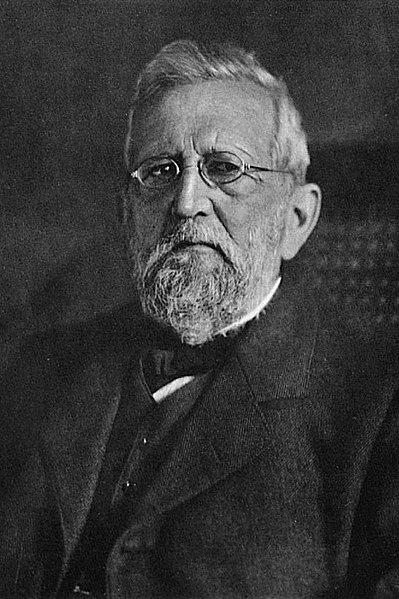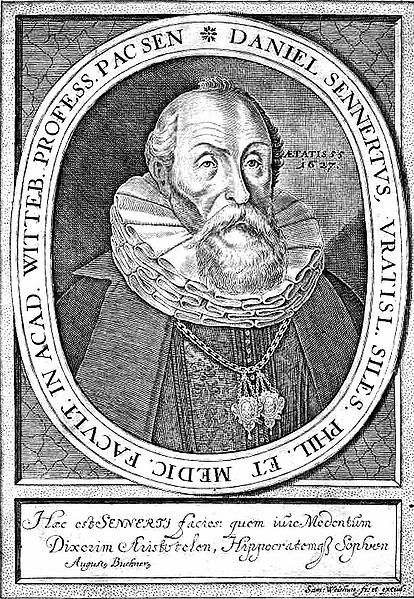After reading Jessica's post over at
MagmaCumLaude of her academic lineage I have been chomping at the bit to work on my own (this has also been done by Ian at
Hypo-thesis a little before Jessica who can trace his lineage back to Newton). Starting at the obvious place, with my advisor, I realized quickly I had a bit of digging to do. My advisor only knew the name of his advisor's advisor (my great
-grand advisor) but nothing more. A quick literature search turned up nothing so I had to go on the hunt. Here are the results of my endeavors. As with Jessica I focused on the PhD advisor since many people either didn't have Master's advisors or they are difficult to impossible to find.
This is me, Jim Lehane (1981-?). I plan on receiving my PhD from the University of Utah in 2013.
 |
| Me |
My graduate advisor is
Dr. A. A. (Tony) Ekdale who teaches at the University of Utah.
 |
| Tony on the shore of the Gulf of California. Photo courtesy of Crystal Hammer. |
Tony received his PhD from Rice University in 1974 with a dissertation entitled "Geologic History of the Abyssal Benthos: Evidence from Trace Fossils in Deep Sea Drilling Project Cores". His primary focus of research is ichnology and is well known for coining the phrase "ichnofabric".
Tony's PhD graduate advisor was Dr. John Warme who taught at Rice University and the Colorado School of Mines.
John received his PhD from the University of California at Los Angeles (UCLA) in 1966. His primary areas of focus are stratigraphy, paleoecology, and ichnology.
John's PhD graduate advisor was
Dr. Clarence A. Hall who is a retired professor for UCLA.
 |
| Clarence Hall's courtesy of UCLA |
Clarence received his PhD from Stanford in 1956 with a dissertation entitled "The Geology of the Pleasanton area, Alameda County, California".
Clarence's PhD graduate advisor was Dr. Siemon (Si) Muller (1900-1970) who was a professor at Stanford University.
Si received his PhD from Stanford in 1930. He is best known for coining the phrase "Permafrost". He was also one of the few people elected to the presidency of The Paleontological Society who never published a description of a fossil.
Si's PhD graduate advisor was Dr. James Perrin Smith (1864-1931) who was a professor at Stanford University.
James received with PhD from Goeettingen, Germany in 1892. He is best known for his study of Mesozoic ammonites.
James's PhD graduate advisor was Dr. Adolf Von Koenen (1837-1915) who was a professor in Goeettingen, Germany.
Adolf received his PhD from Friedrich-Wilhelms-Universität, Berlin (later Humboldt University of Berlin) in 1865. His dissertation is entitled "De stratis helmstaedtiensibus oligocaenis inferioribu".
Adolf's PhD graduate advisor was
Heinrich Ernst Beyrich (1815-1896)
who was a professor at Friedrich-Wilhelms-Universität.
Heinrich recieved his PhD in 1837 at the University of Berlin (UB), with a dissertation entitled:
De goniatitis in montibus rhenanis occurrentibus. He is known as one of the founders of the German Geological Society and proposed the term Oligocene.
Christian received his PhD in 1801 from the Georg received his PhD in 1804 from the University of Leipzig. University of Erlangen. His advisor is unknown.

Christian's PhD advisor was
Abraham Gottlob Werner (1750-1817)
.
Abraham received his PhD in 1774 from the University of Leipzig. Abraham is known for advancing the "Neptunian" view of the earth, which stated that all rocks had been deposited in a primordial ocean.
Footnotes
I was stuck on Clarence Hall for a while and even got a copy of his dissertation to find out his advisor who nobody really seemed sure of. Even the dissertation did not specifically call it out. But upon finding out he was still alive, I just emailed him and my suspicions were immediately proved correct (very fast email response) that it was Si who was his advisor. Further work was easy on the internet, since there are a couple of biographies online that spell out everything I needed to keep going back until I get to Adolf von Koenen. He was a little more of an enigma to crack until I got his dissertation and was able to search for his name along with those mentioned in it (even though it was in Latin). I found a connection with one of the prominent names mentioned in his Vita at the end and found him to be mentioned as a student of Beyrich's.
Although Beyrich's dissertation is readily available online (in Latin) it is difficult to make out who his advisor was. He studied under both Weiss (a mineralogist) and Goldfuss (a paleontologist and a zoologist). I would assume it was Goldfuss since he is noted as turning Beyrich onto Paleontology but Beyrich received his degree at Berlin where Weiss taught while Goldfuss taught at Bonn. This is why I put them both down.
This is where I hit the goldmine. While searching for Christian Samuel Weiss I stumbled upon the Mathematics Genealogy Project and the Academictree.org which allowed me to follow my family tree back to the 1400's. I used both of these sources and when they agreed I followed that line further back.
Once you hit a certain point back it appeared that several people along my lineage received MD's as if they were PhD's with advisors. This is contrary to today where the MD is quite distinct from a PhD. And even further back from that most scholars were theologians and philosophers so it is no wonder that my lineage could be traced back to Jesus, even if I do find that a bit tenuous.




























